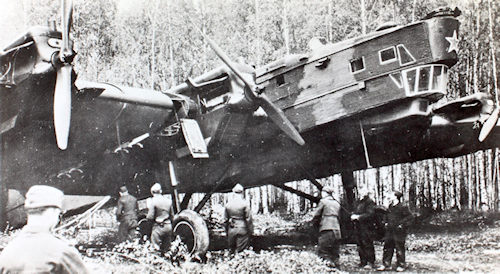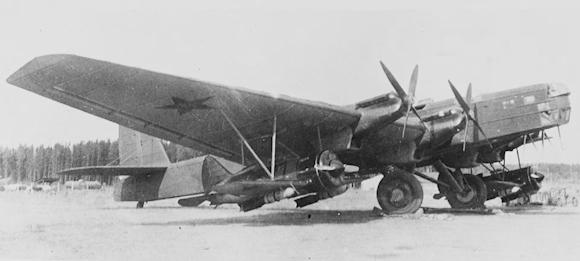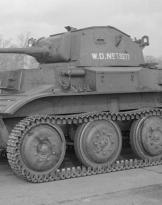Il Tupolev TB-3 It was a monoplane heavy bomber of the Soviet Air Force. The medium – also known as ANT-6 - was introduced in the 1930s and was used in the early years of the Second World War. The aircraft was a four-engine aircraft with eclectic qualities.
It is important to point out that for the creation of the Tupolev TB-3 Soviet technicians took the bomber as a model Tupolev TB-1.
The first prototype took to the skies for the first time on December 22, 1930, and was piloted by Mikhail Mikhailovich Gromov. The Tupolev TB-3 it entered service in 1932 and overall - from 1932 to 1937 - more than 800 examples were built.
Giorgio Bonacina, regarding the Tupolev TB-3, writes: “The bomber and transport versions retained the double pilot seat in the open until the end, even if the more modern series and subseries were equipped with closed turrets for the installations of on-board weapons, while the variants intended for exploration in the 'Arctics obviously had a completely closed cabin (and were equipped with skis instead of the bulky non-retractable landing gear)”.1

Il Tupolev TB-3, from an operational point of view, was used for the first time by the Soviets in Khalkin Gol battles (11 May-16 September 1939) against the Japanese Empire (Soviet-Japanese Border War). Furthermore, the aircraft was used during the Russo-Finnish War (30 November 1939 – 13 March 1940). In this regard, after the partition of Poland, Joseph Stalin was "restless" to protect the Baltic flank of the Soviet Union from a possible future threat from his temporary ally Adolf Hitler. Therefore, the Soviet authorities immediately began working to secure strategic control of those Baltic areas that had formed the buffer territories of old Russia.
By October 10th they were concluded with “Estonia, Latvia and Lithuania of the agreements according to which Soviet forces would garrison the key points of these countries. On the 9th the Soviet government opened negotiations with Finland and on the 14th formulated its demands”.2 However, national pride made it difficult for the Finns to accept… the Soviet invasion of Finland began on November 30th.
It is good to remember that the bombing activity of Tupolev TB-3 it performed very poorly against the German forces that invaded the Soviet Union in 1941. Nonetheless, the aircraft took part in major battles until 1943.

I Tupolev TB-3 as transport vehicles, however, they were able to operate successfully for the Soviet Air Force at least until 1944, frequently distinguishing themselves also in the launch of parachute troops.
Il Tupolev TB-3 (model 1934) had a wingspan of 41,8 m, height of 8,5 m, length of 24,4 m.
The empty weight was 11200 kg, while fully loaded 17200 kg.
Engine: 4 Mikulin M-17 V-12 liquid-cooled pistons, power 705 HP. The maximum speed was 212 km/h and the ceiling altitude was 4800 m.
The armament consisted of 7,62x54 mmR Degtyaryov machine guns. Furthermore, the vehicle was capable of carrying up to 5000 kg of bombs.
Il Tupolev TB-3 it could count on a crew of 8/10 men.
1 G. Bonacina, The Tupolev TB-3, in Illustrated History n°201, 1974, p.65
2 BH Liddell Hart, Military history of World War II. Armies, fronts and battles, Mondadori, Milan, 2021, p.58












